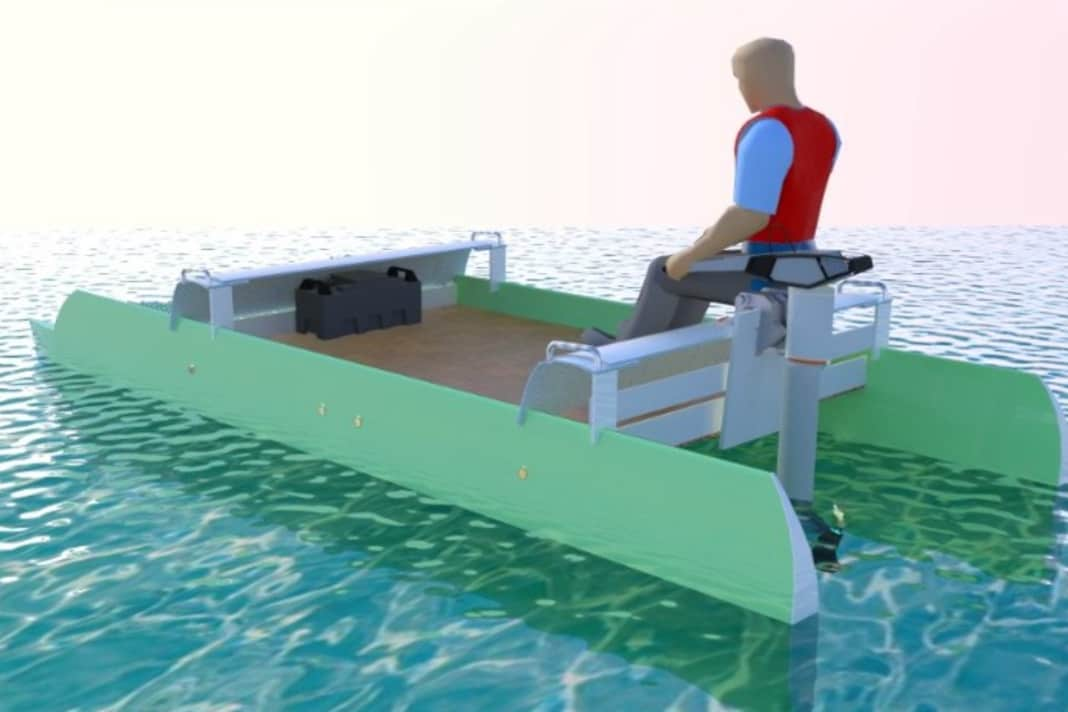



The disposal of disused rotor blades from wind turbines poses major challenges for the industry. According to US research institutes, up to 12 billion tonnes of these non-biodegradable composite materials could reach the end of their service life by 2050. Conventional disposal methods such as landfill or energy-intensive recycling processes do not offer satisfactory solutions. The Indian company Akvotransiro Tech has now developed a patented process to convert these rotor blades into modular catamarans for inland waterway transport.
From wind power to the water
The process, known as "Wind2Water", utilises the aerodynamic shape and high material strength of the rotor blades to produce hydrodynamic hull modules for multihull boats. The glass fibre composite materials of the rotor blades have a stiffness of 72 to 76 gigapascals and retain most of their structural properties even after their original service life.
The conversion process begins directly at the wind turbine site, where the disused rotor blades are broken down into transportable segments of 10 to 15 metres. These sections fit into standard containers and can be transported to processing centres at low cost. There, they are inspected for structural integrity, followed by reinforcement, sealing and the installation of bulkheads to create watertight hull modules. The finished modules can be shipped worldwide and assembled on site into catamarans or floating pontoons.
Prototypes swim
As a "proof of concept", Akvotransiro has already built a four-seater catamaran that uses disused wind turbine blades as a hull. The connecting elements are made of bamboo tubes laminated with epoxy resin, which emphasises the sustainability of the concept. The result is a fully demountable, low-cost boat that combines two contrasting materials: hard-to-recycle blades and bamboo, one of the most sustainable plants in the world.
Economic and ecological advantages
The conversion of disused rotor blades into boat hulls offers several advantages. For the wind power industry, it reduces disposal costs, which can amount to up to 18,000 euros per 10 tonnes of blade mass. For the boat market, vehicles cost between a third and a quarter of the cost of conventional construction methods.
Each repurposed rotor blade avoids the release of 1.5 to 3 tonnes of CO₂ and prevents 10 to 25 tonnes of composite material from ending up in landfill sites or cement kilns. The converted hulls require around 60 per cent less energy than conventional GRP constructions and 80 per cent less than steel hulls. In addition, the use of disused rotor blades reduces deforestation for traditional wooden boat construction.
The concept is based on historical models. In Vietnam and Laos, for example, jettisoned external fuel tanks from US fighter planes were converted into aluminium canoes, some of which are still in use after 50 years. In South East Asia, plastic barrels are also being converted into rafts, docks and small boats.
Technical data
- Material: Glass fibre composites made from disused wind turbine blades
- Stiffness of the material: 72-76 gigapascals
- Transportable segment length: 10-15 metres
- CO₂ savings per repurposed rotor blade: 1.5-3 tonnes
- Avoided landfill per rotor blade: 10-25 tonnes of composite material
- Energy saving compared to GRP constructions: approx. 60%
- Energy saving compared to steel hulls: approx. 80%
- Cost savings compared to conventional construction methods: 66-75%
About Akvotransiro Tech
Akvotransiro Tech Pvt Ltd was founded with the aim of developing environmentally friendly transport solutions for inland waterways. Headquartered in Guwahati, Assam (India) and with a branch office in Delhi, the company specialises in converting waste materials into functional watercraft. With its patented Wind2Water process, Akvotransiro contributes to the circular economy and the sustainable development of water transport, especially in developing countries.

